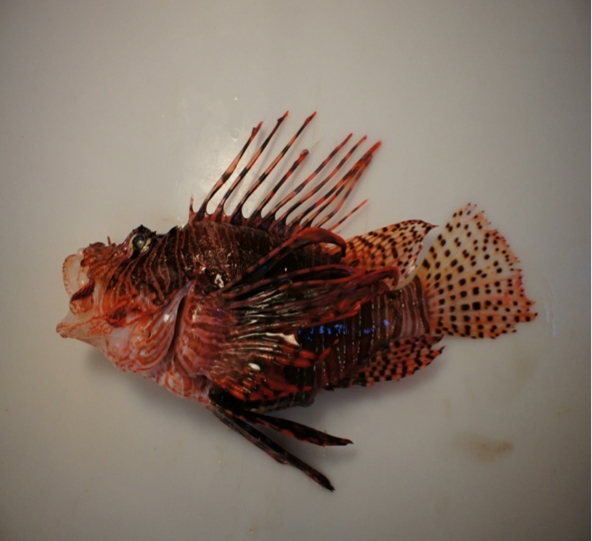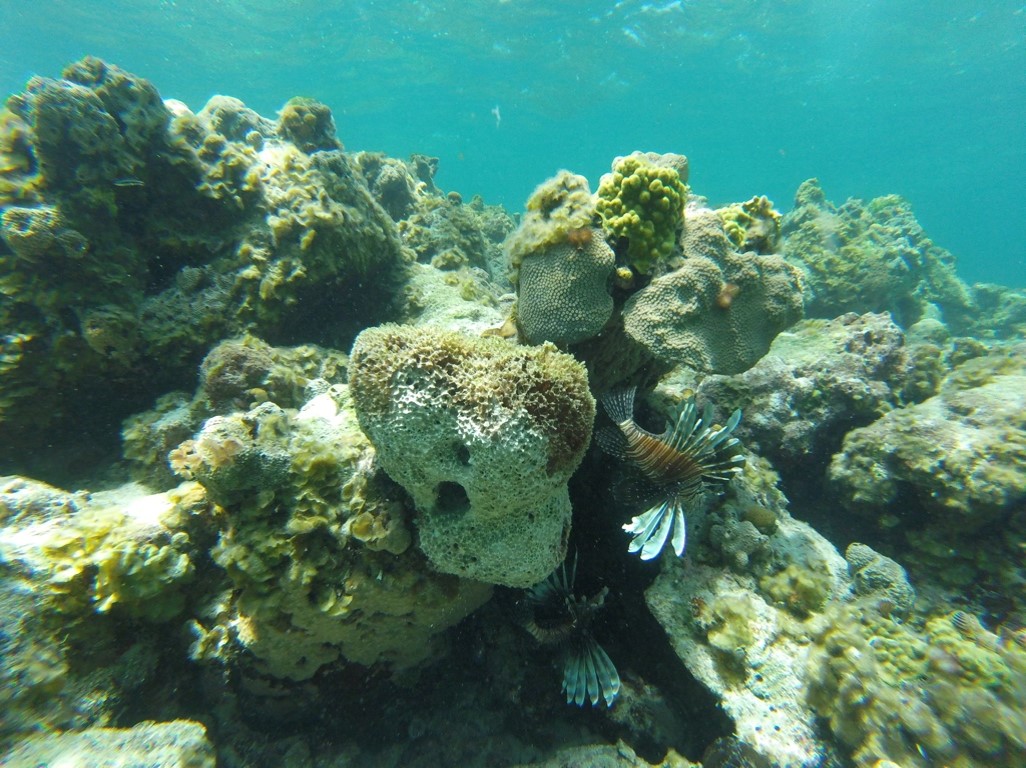Red Lionfish (Pterois volitans) is a venomous species that has been invasive to The Bahamas for over a decade (since 2004). It was first observed around Eleuthera in 2005 and has since become established around the island and its neighbouring cays. Research has shown that the impact of their invasion has and will continue to have detrimental impacts on marine habitats, especially coral reefs. Due to their voracious appetite and rapid reproduction (potentially up to 2 million eggs per year!), they have the potential to decrease commercially fished species’ populations and alter ecosystem processes e.g food webs. Their ability to do so has been aided by the naiveite´ (unfamiliarity with lionfish) of native fish and the fact that lionfish have no natural predators in Western Atlantic waters. As such, Cape Eleuthera Institute has promoted consumption of lionfish in an attempt to introduce it as a commercially consumed fish. This summer Newcastle University student Myca Cedeno has been conducting a social science study aiming to determine the spread of knowledge Eleutheran residents have on lionfish and consuming them as a means of managing their invasion and contributing to food security.
In April 2014, CEI introduced a Lionfish Slayer campaign, encouraging members of the public to spear lionfish in return for payment; a venture which was met with success. This summer Myca has advertised this campaign and worked to inform Eleutheran’s about lionfish’s nature as a “venomous” and not a “poisonous” species. Through interviews he has documented the views of the public on safely consuming this invader given their deleterious effects on the reefs. Myca has been in the field interviewing fishermen, restauranteurs and other members of the public as part of his dissertation research. His data collection is also coupled with educational outreach, as each interviewee is left with a flyer, detailing the history of the invasion, why it is safe to consume (despite its venomous spines), how to handle and prepare it and what to do if stuck by a spine.
So far, it’s nature as a venomous species has been a major deterrent to consumption for consumers and catch by fishermen. Restauranteurs have highlighted a lack of availability of the lionfish, potentially linked with the apprehension of fishermen to catch them. It is the hope that this research and outreach effort will help further educate the public as to the value of eating red lionfish and will provide insight as to how best to further promote this venture.
